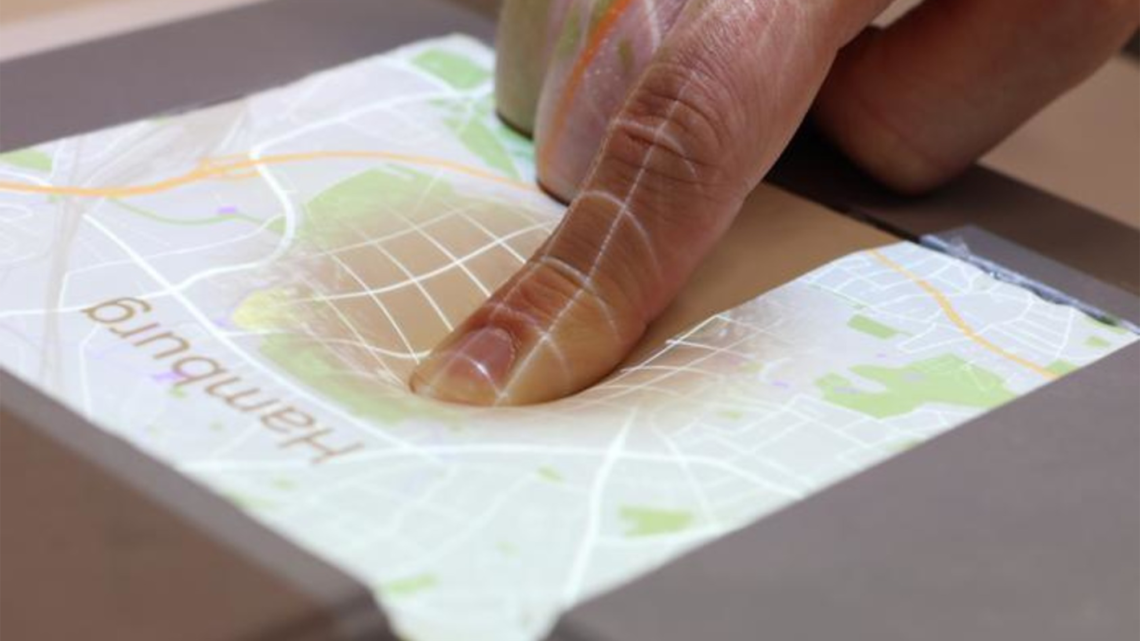Online doom scrollers of the future could one-day add a new physical dimension to their arsenal of tapping and swiping. Researchers from the University of Bath recently developed a new “deformable,” silicone-based touch screen capable of altering its shape and stiffness when users apply various levels of force to it. The screen, which they refer to as “DeformIO” in a paper published in the Association for Computing Machinery, uses pneumatics and sensors to register levels of pressure applied by a finger and then physically collapses around it. Though the pliable screen is still nascent, researchers involved in its development say it could one day add a new input layer to mobile devices that could be used for a wide variety of use tasks, from navigating between digital maps to playing games and “feeling” the stiffness of products virtually.
“Though DeformIO isn’t the first deformable screen it is the first to leverage pneumatics and restive sensing,” University of Bath Computer Science Professor and study lead author James Nash said. “In other words, DeformIO allows users to perceive richer, more tactile and natural feedback as they press into the elastic surface.”
How does the deformable screen work?
Past attempts at creating tactile, pressure responsive screens relied largely on re-configurable panels and raised pins lying just below the device’s surface which lower when pressure is applied. That form factor was limiting, Nash and his co-authors write, because it would lead to sharp breaks between areas of the screen where pressure is applied and others where there isn’t. In this case, DeformIO can apply multiple force inputs simultaneously on various parts of the screen. This novel technique means users can experience a sensation of continuous, uninterrupted tactical response while moving their finger across the screen. This particular screen is 3 mm thick with a 140 mm2 surface…
Read the full article here

